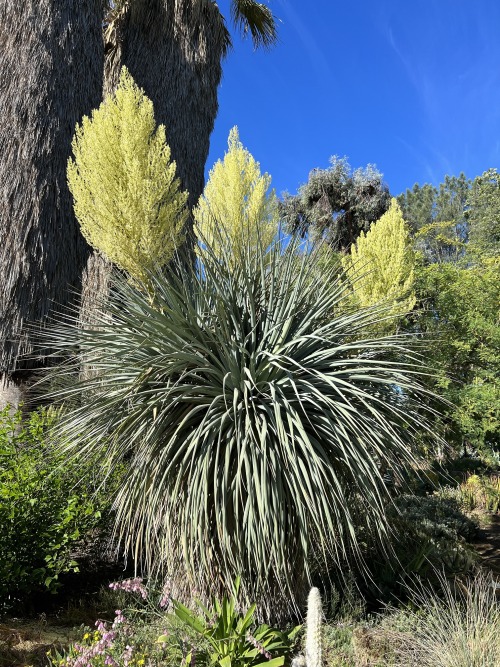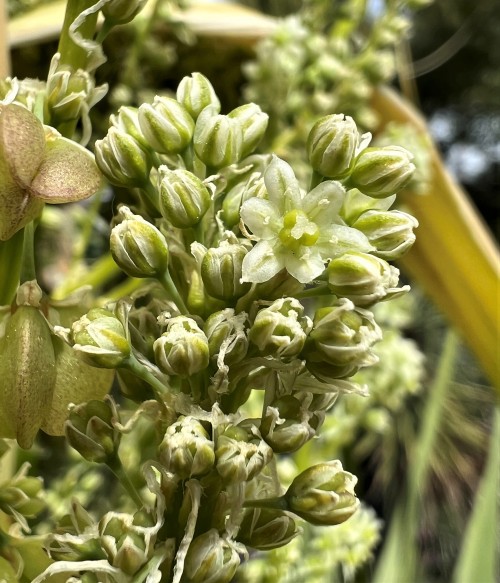#nolinoideae
Nolina nelsonii
The genus Nolina is part of a group of genera that are sometimes treated as a family (Nolinaceae), but also included by some in the larger family Ruscaceae, or by others in the still larger family Asparagaceae. In the latter classification, the group is classified as the subfamily Nolinoideae. In any case, the species of Nolina and their relatives are all dioecious - that is, with separate male and female plants. This means that the pollinator must be attracted to both the male and female flowers, so that it will visit both and bring about cross-pollination. The pollinators in this case are bees, with various species avidly seeking out the flowers, which are small and creamy. Nolina nelsonii is native to the state of Tamaulipas in northeastern Mexico. It is notable for its pale blue leaves, not to mention the spectacular plumes of many thousands of tiny flowers.
-Brian
Post link
Nolina hibernica
This Nolina has a large head of strap-like leaves, looking like a giant clump of grass, but it develops a tall trunk in time. Our plant is just starting to form a trunk, and this is the first time it has flowered. The inflorescence is impressively tall, with thousands of tiny greenish-white flowers. Like other related plants (such as Beaucarnea), it has separate male and female individuals, and this one is a female. Bees are very fond of the flowers. From southern Nuevo Leon and adjacent southwestern Tamaulipas in the Sierra Madre Oriental of northeastern Mexico.
-Brian
Post link



